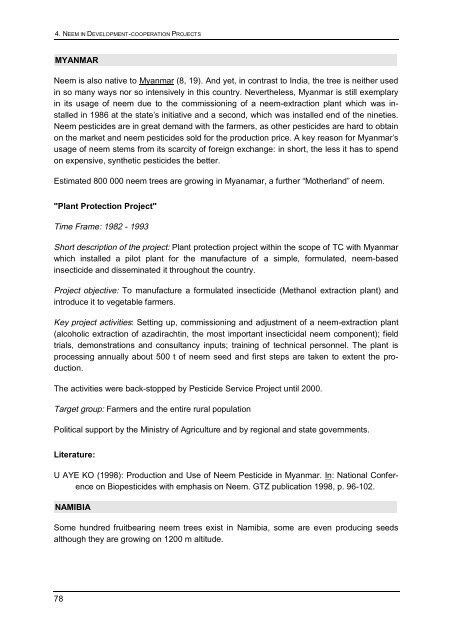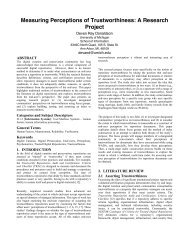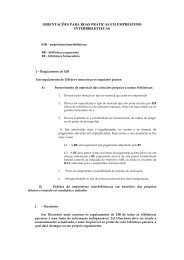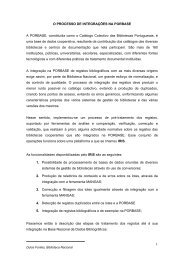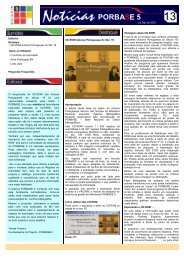Status report on global Neem usage - Biblioteca Nacional de Portugal
Status report on global Neem usage - Biblioteca Nacional de Portugal
Status report on global Neem usage - Biblioteca Nacional de Portugal
Create successful ePaper yourself
Turn your PDF publications into a flip-book with our unique Google optimized e-Paper software.
4. NEEM IN DEVELOPMENT-COOPERATION PROJECTS<br />
MYANMAR<br />
<strong>Neem</strong> is also native to Myanmar (8, 19). And yet, in c<strong>on</strong>trast to India, the tree is neither used<br />
in so many ways nor so intensively in this country. Nevertheless, Myanmar is still exemplary<br />
in its <strong>usage</strong> of neem due to the commissi<strong>on</strong>ing of a neem-extracti<strong>on</strong> plant which was installed<br />
in 1986 at the state’s initiative and a sec<strong>on</strong>d, which was installed end of the nineties.<br />
<strong>Neem</strong> pestici<strong>de</strong>s are in great <strong>de</strong>mand with the farmers, as other pestici<strong>de</strong>s are hard to obtain<br />
<strong>on</strong> the market and neem pestici<strong>de</strong>s sold for the producti<strong>on</strong> price. A key reas<strong>on</strong> for Myanmar’s<br />
<strong>usage</strong> of neem stems from its scarcity of foreign exchange: in short, the less it has to spend<br />
<strong>on</strong> expensive, synthetic pestici<strong>de</strong>s the better.<br />
Estimated 800 000 neem trees are growing in Myanamar, a further “Motherland” of neem.<br />
"Plant Protecti<strong>on</strong> Project"<br />
Time Frame: 1982 - 1993<br />
Short <strong>de</strong>scripti<strong>on</strong> of the project: Plant protecti<strong>on</strong> project within the scope of TC with Myanmar<br />
which installed a pilot plant for the manufacture of a simple, formulated, neem-based<br />
insectici<strong>de</strong> and disseminated it throughout the country.<br />
Project objective: To manufacture a formulated insectici<strong>de</strong> (Methanol extracti<strong>on</strong> plant) and<br />
introduce it to vegetable farmers.<br />
Key project activities: Setting up, commissi<strong>on</strong>ing and adjustment of a neem-extracti<strong>on</strong> plant<br />
(alcoholic extracti<strong>on</strong> of azadirachtin, the most important insecticidal neem comp<strong>on</strong>ent); field<br />
trials, <strong>de</strong>m<strong>on</strong>strati<strong>on</strong>s and c<strong>on</strong>sultancy inputs; training of technical pers<strong>on</strong>nel. The plant is<br />
processing annually about 500 t of neem seed and first steps are taken to extent the producti<strong>on</strong>.<br />
The activities were back-stopped by Pestici<strong>de</strong> Service Project until 2000.<br />
Target group: Farmers and the entire rural populati<strong>on</strong><br />
Political support by the Ministry of Agriculture and by regi<strong>on</strong>al and state governments.<br />
Literature:<br />
U AYE KO (1998): Producti<strong>on</strong> and Use of <strong>Neem</strong> Pestici<strong>de</strong> in Myanmar. In: Nati<strong>on</strong>al C<strong>on</strong>ference<br />
<strong>on</strong> Biopestici<strong>de</strong>s with emphasis <strong>on</strong> <strong>Neem</strong>. GTZ publicati<strong>on</strong> 1998, p. 96-102.<br />
NAMIBIA<br />
Some hundred fruitbearing neem trees exist in Namibia, some are even producing seeds<br />
although they are growing <strong>on</strong> 1200 m altitu<strong>de</strong>.<br />
78


